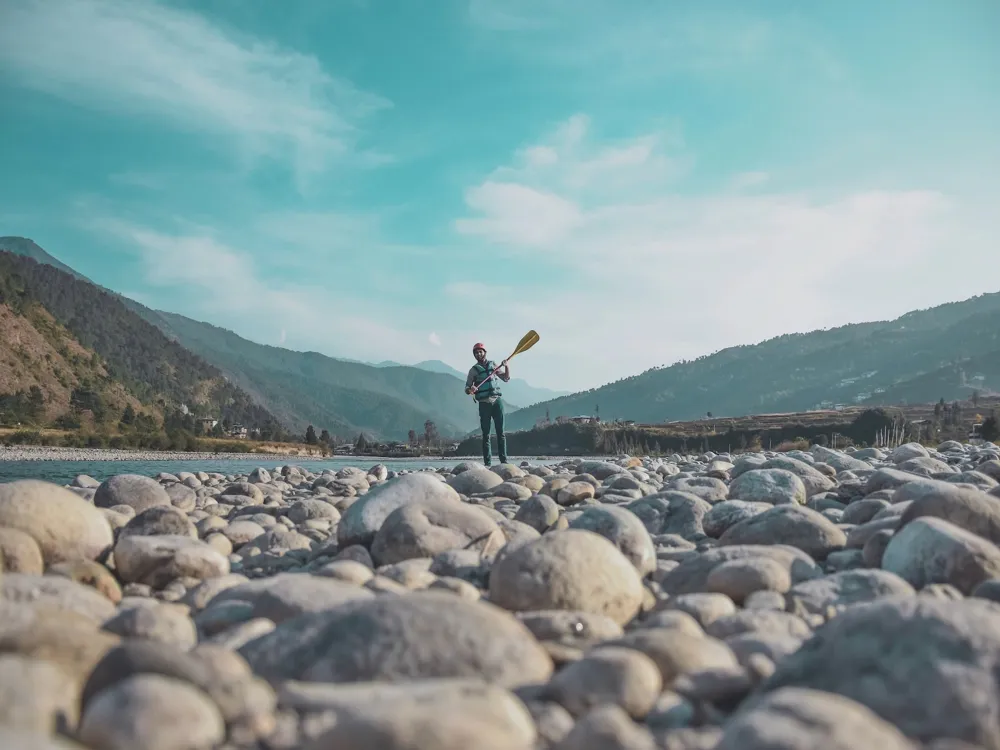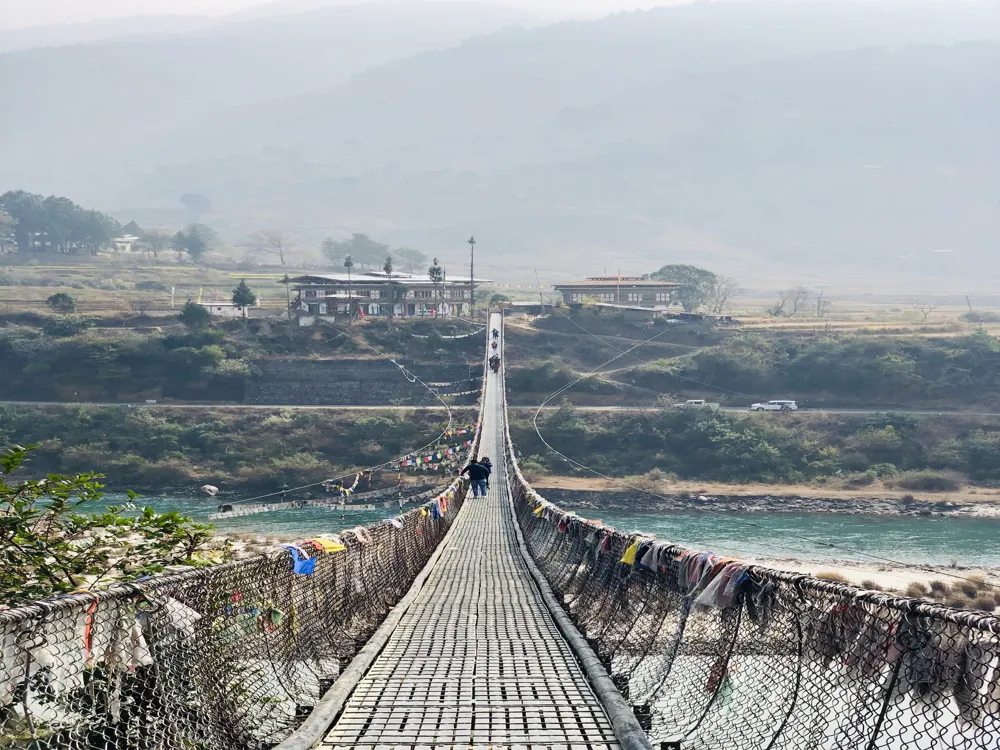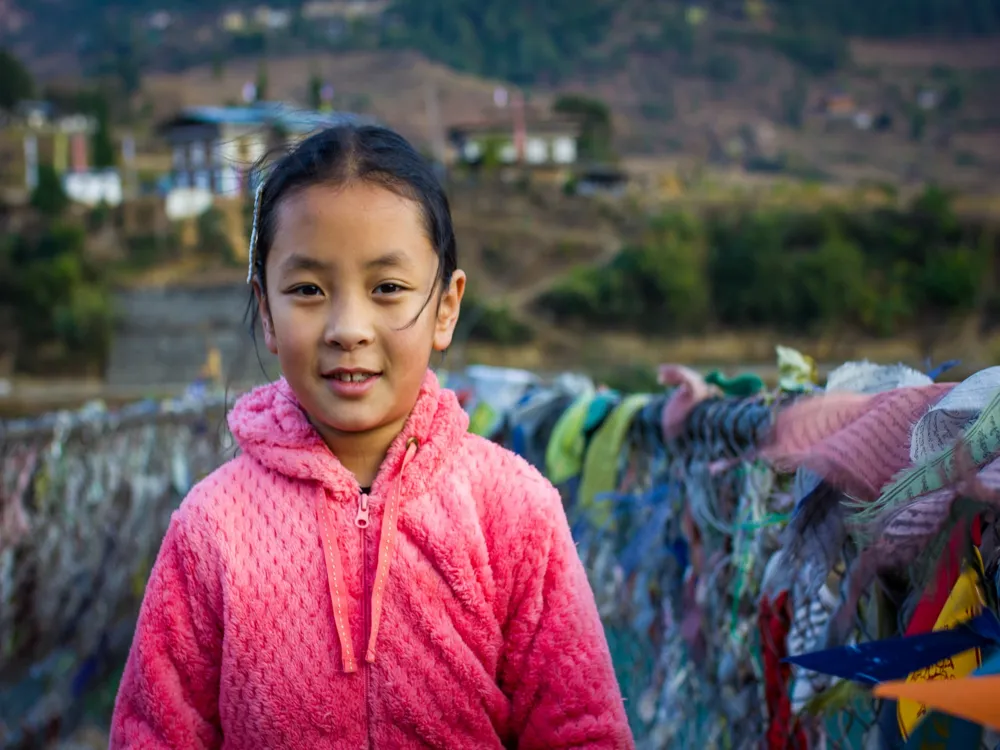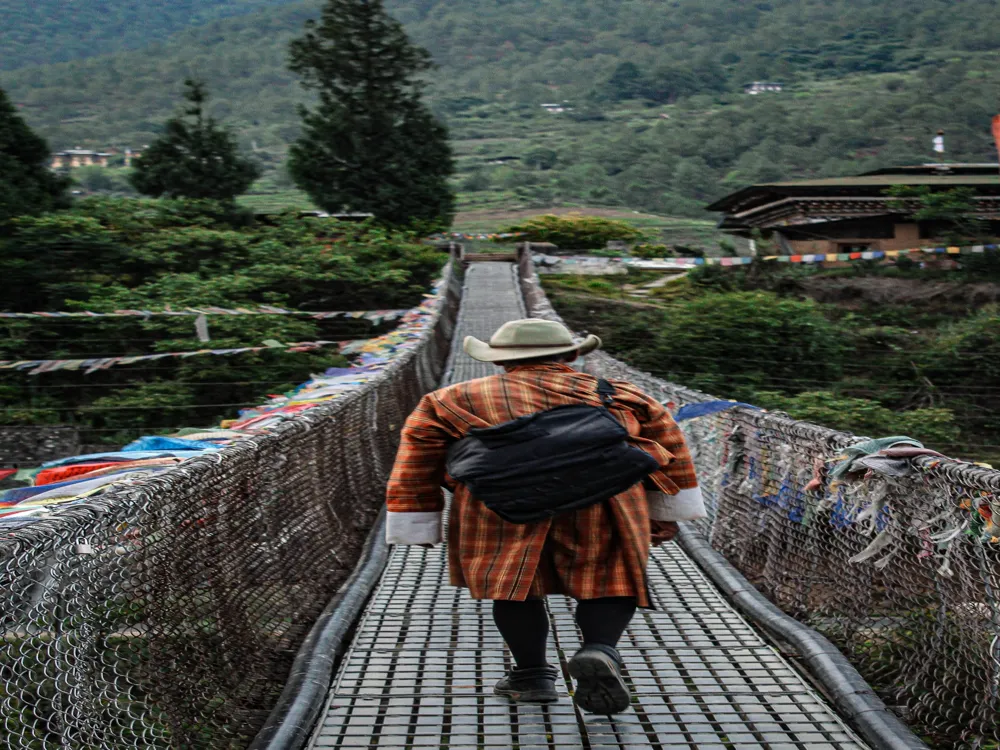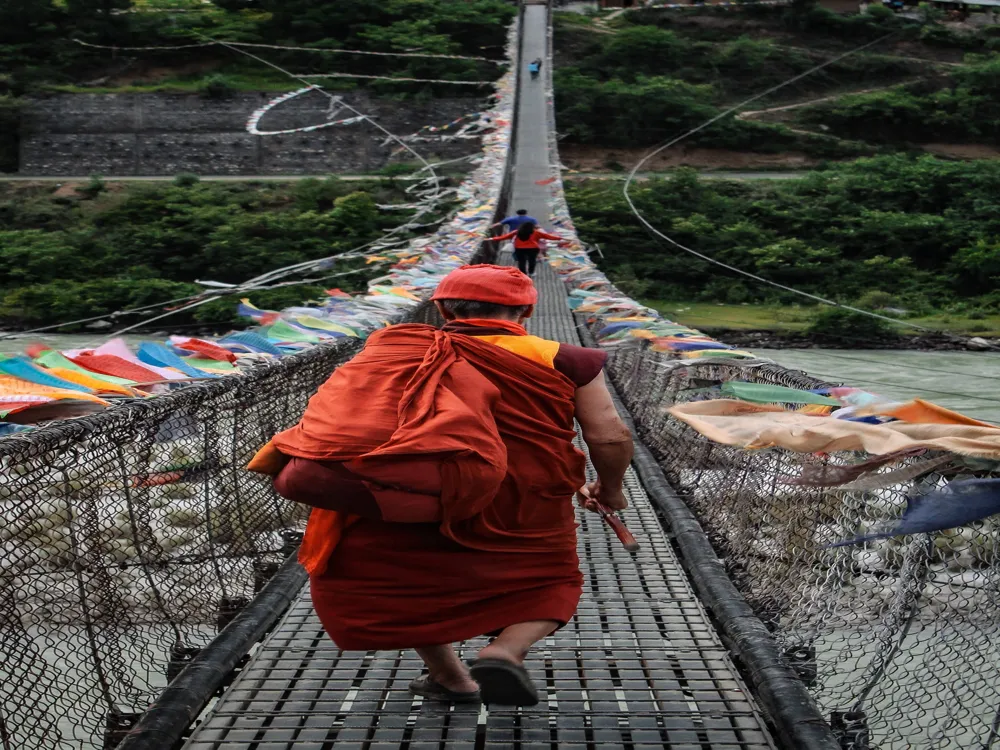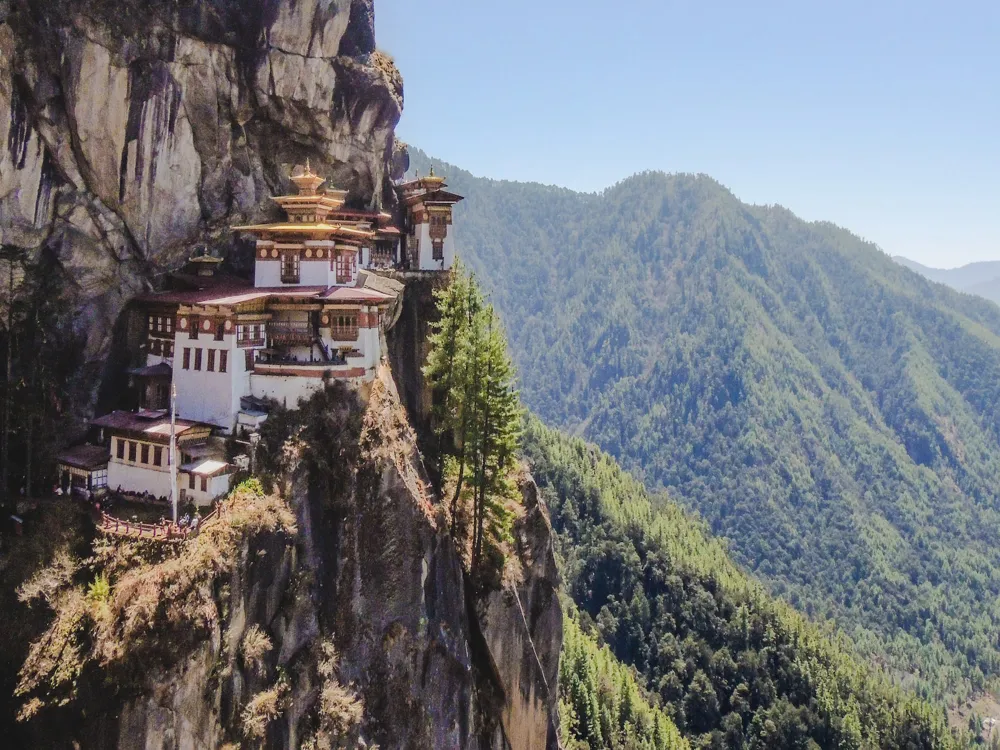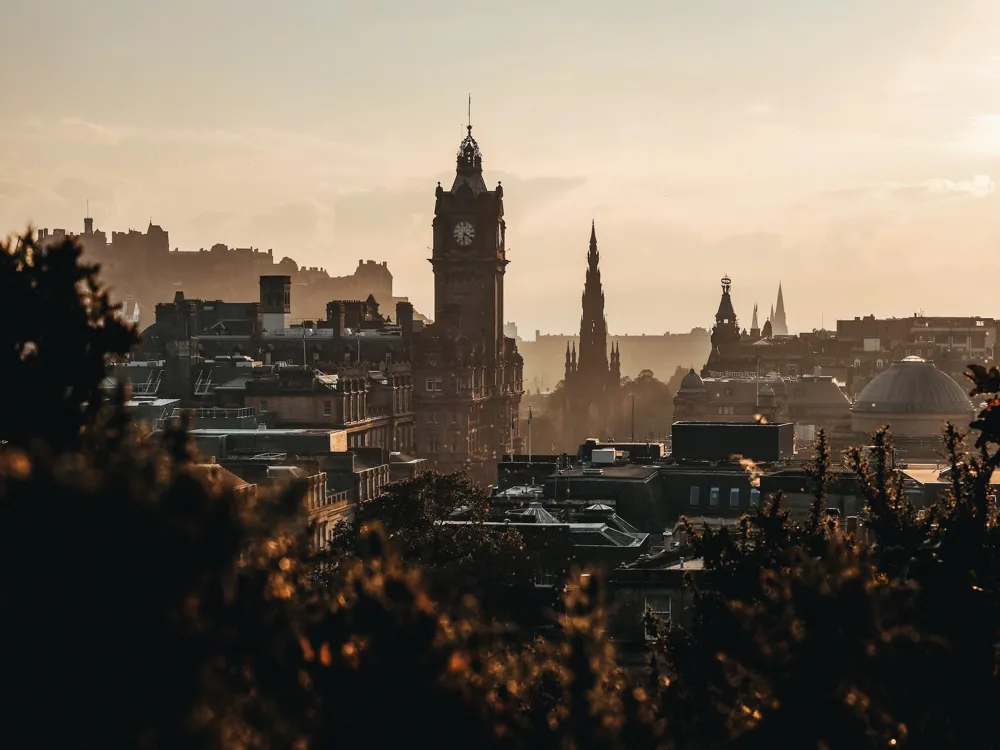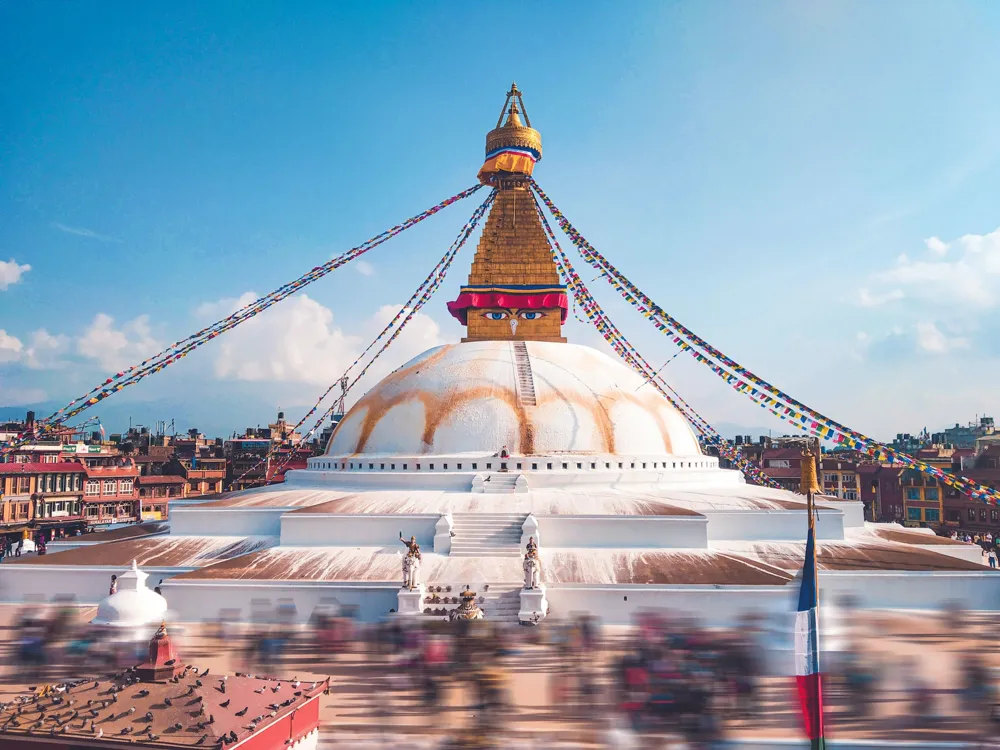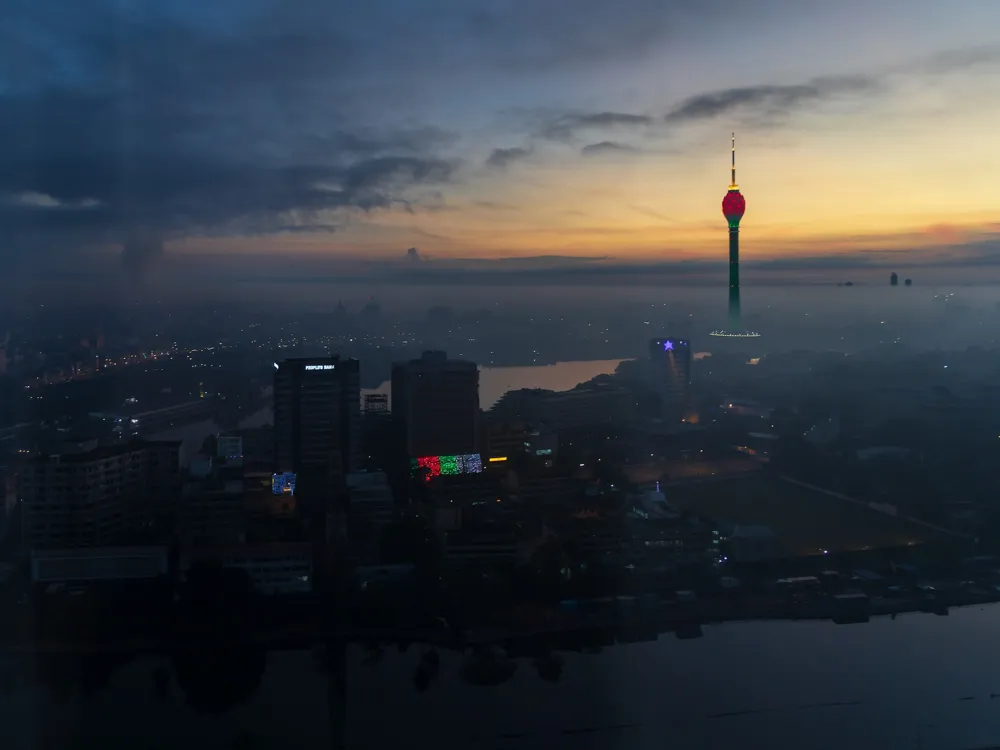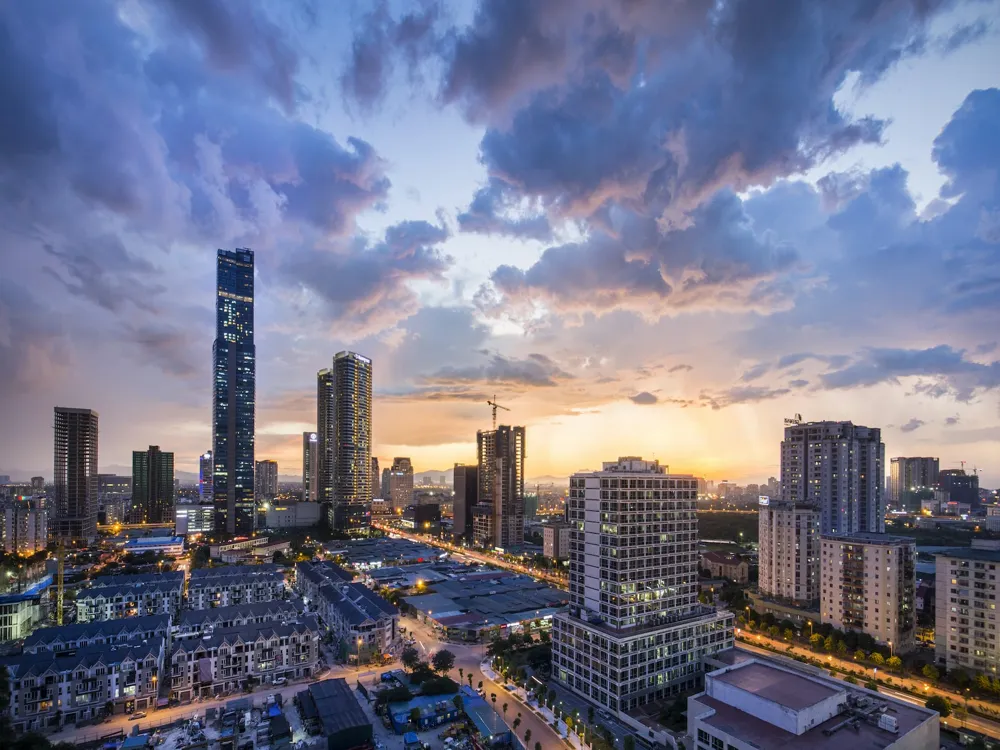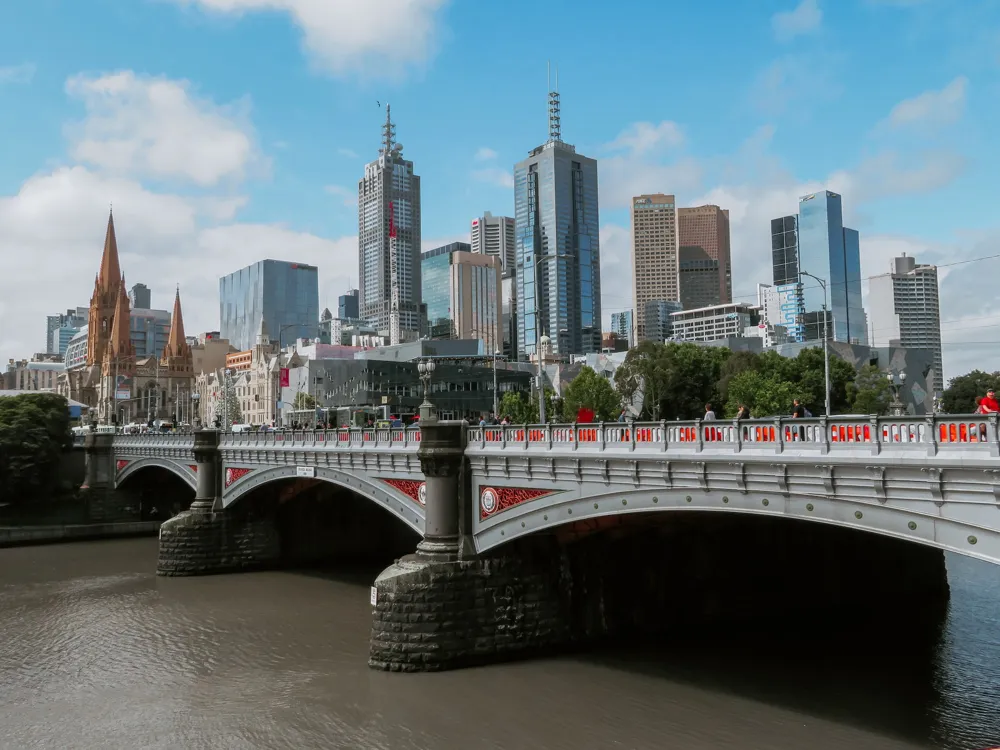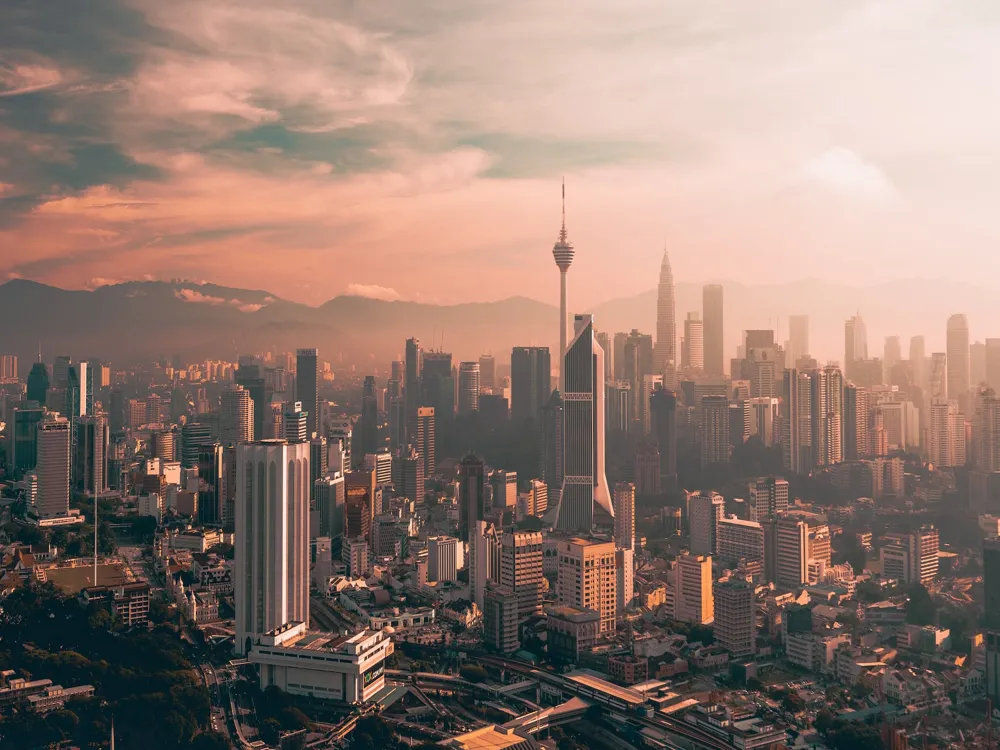Plan Your Travel To Punakha
Places To Visit In Punakha
Chimi Lhakhang
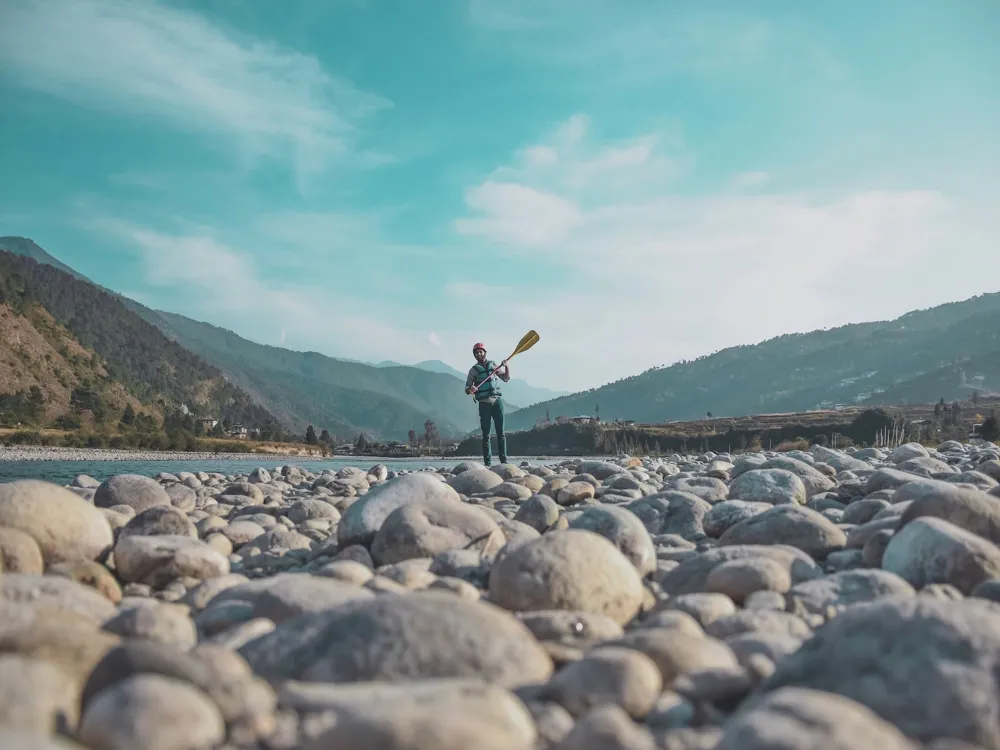
Located an hour outside Punakha village, Chimi Lhakhang, (also known as Chime Lhakhang) is a Buddhist monastery best known for its worship of the phallus. It stands on a round hillock said to resemble breasts and is decorated with phallic symbols all along its walls. It was built in honour of Drukpa Kunley, the “Divine Madman” who preaches Buddhism through humour and sexual tones.
Chimi Lhakhang is known as a fertility temple for blessing couples with a 10-inch wooden penis that is tapped on their shoulders. Visitors come from all around the world to visit the monastery, obtain blessings, and get a glimpse of a unique side of Buddhism. Visiting sites like Chimi Lhakhang in Punakha does require a permit to enter the district. These are usually pre-arranged through tour operators once one submits an online application to the Tourism Council of Bhutan in Thimphu. This is charged at approximately INR 2,800. Keep this permit handy when travelling in case it needs to be shown at checkpoints.
Read More
Jigme Dorji National Park
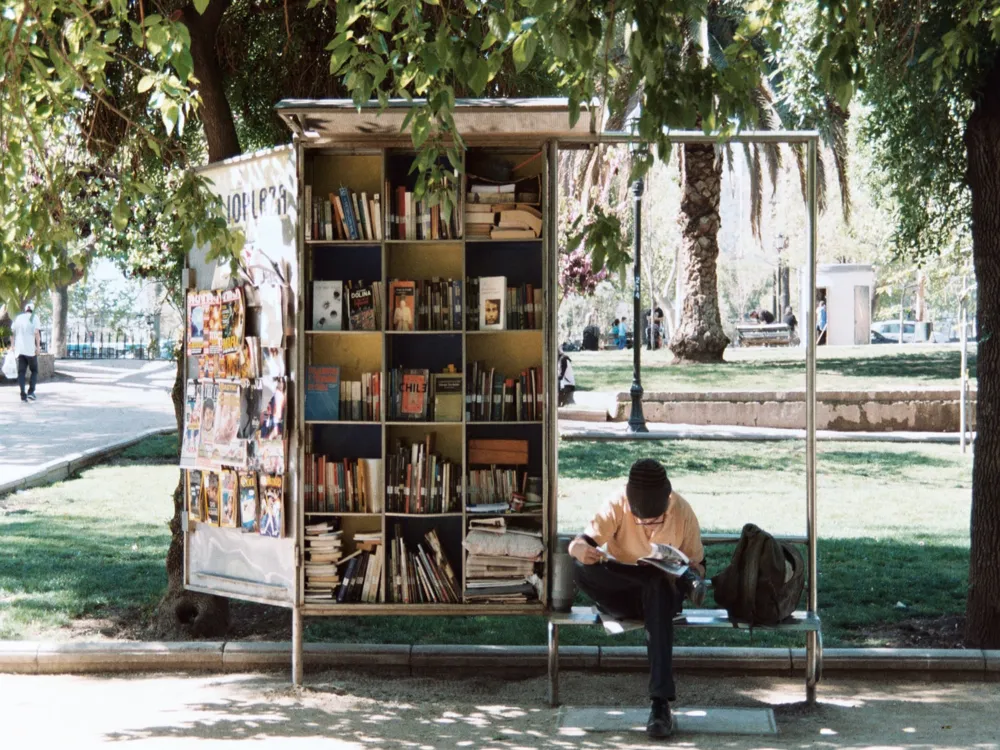
Bhutan is a country which always believes in preserving the traditional valuables and respects its natural resources. And following its footsteps, Jigme Dorji National Park not only houses the distinct flora and fauna but also provides them with all the essential resources, facilities and care.
Stretching over an area of 4316 square kilometres, Jigme Dorji National Park is the second largest national park of Bhutan. Named after Jigme Dorji Wangchuck, the third king of Bhutan, it is the crown jewel of the country due to the treasures that it holds within its boundaries.
Source
Read More
Khamsum Yulley Namgyal Chorten
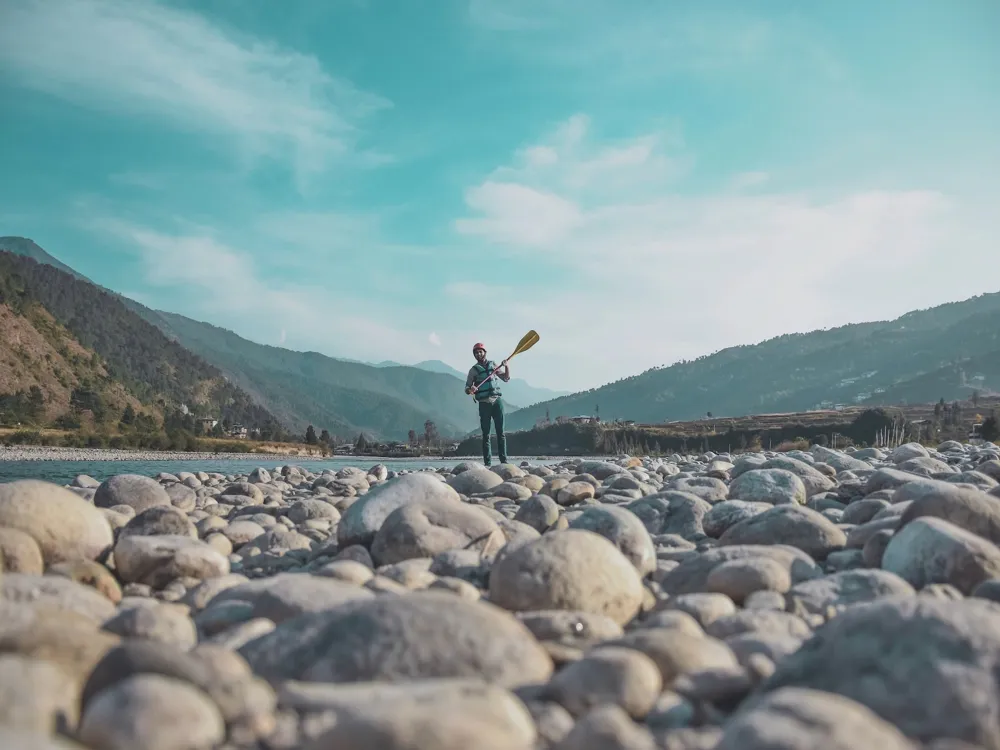
Located after a hike of 45 minutes from a small hill having a beautiful prayer wheel, Khansum Yulley Namgyal Chorten is a spectacular site to visit because of the beautiful view of the surroundings that it offers. It has a very rich history as to why it was built and it is a pleasure to hear it from one of the local guides. It is adorned with beautiful paintings of Sakyamuni, which makes this chorten a must watch.
Mo Chhu (River)
/mo-chhu-river-slider-1.webp)
Starting from Gasa Dzongkhag district near Tibet and Bhutan border, the Mo Chhu(River) flows towards Punakha in the central region of Bhutan. It then joins the Po Chhu from the northeast of Bhutan. The confluence of the two rivers is right below the Punakha Dzong which is a treasure trove of experiences as activities like Rafting and Kayaking are carried out here. The confluence of the 'Mo chhu' and 'Po chhu' is called 'Puna Tseng Chhu', which then flows through Wangdue Phodrang, and the districts of Dagana and Tsirang.
Read More
Punakha Crematorium
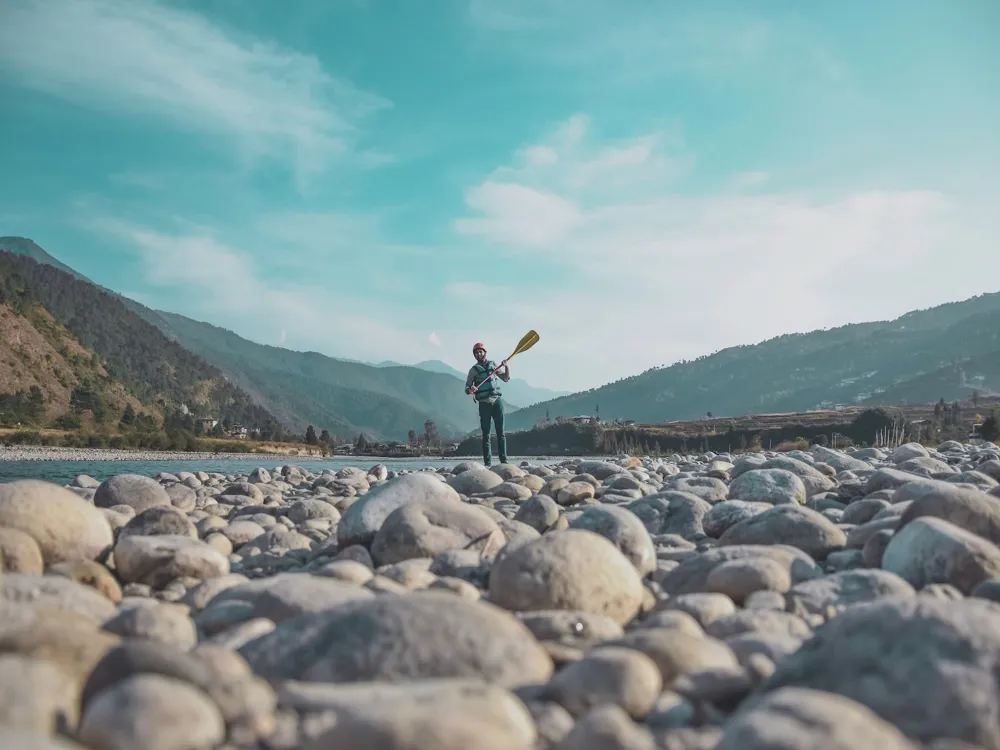
Located north of the dzong, the Punakha Creamtorium is the only cremation site in the entire town. When someone in the valley dies, the body is carried all the way over to this ground where the whole village participates in the cremation ritual dedicated to help the soul pass on. The ground is best viewed from the Punakha Suspension Bridge.
Punakha Dzong
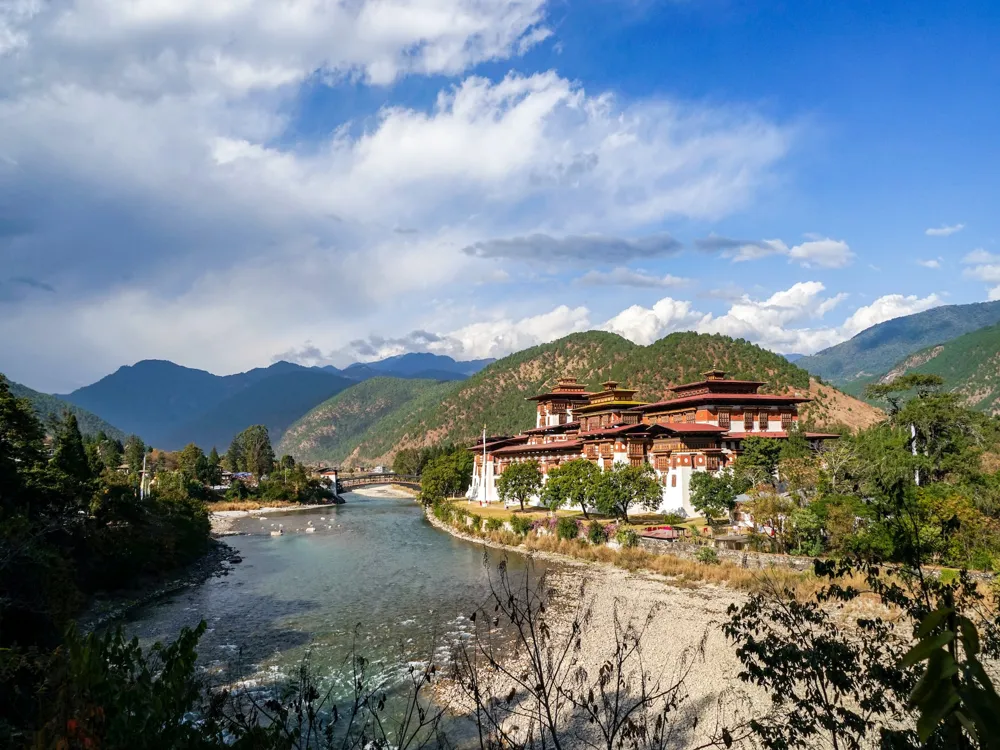
Punakha Dzong is the second oldest and second largest dzong in the country. It was here that the first national assembly was held in 1953 and it remained the seat of the Government of Bhutan until 1955. Not only does this dzong boast of Bhutanese architectural marvel, but it also remains culturally important for housing sacred relics of the Kagyu school of Tibetan Buddhism and the sacred remains of Ngawang Namgyal, the Tibetan Buddhist lama and unifier of the country of Bhutan.
Located at the intersection of the Pho Chuu and Mo Chuu rivers in the Punakha Valley, Punakha Dzong was constructed in 1637 by Ngawang Namgyal. It is over 180 metres (590 feet) long and 72 metres (236 feet) wide having six towers surrounding it and the only way to reach the dzong is by crossing the bazam (bridge). It was built within a year of construction and interestingly, it was built without the use of any nails. Punakha Dzong is listed in Bhutan’s tentative list for UNESCO inclusion for its cultural, religious, and architectural significance in the region. Moreover, Punakha Dzong’s altitude of 1,200 metres provides relief while adjusting to altitudes in the region, making this an ideal location to begin a journey in Bhutan.
Read More
Punakha Suspension Bridge
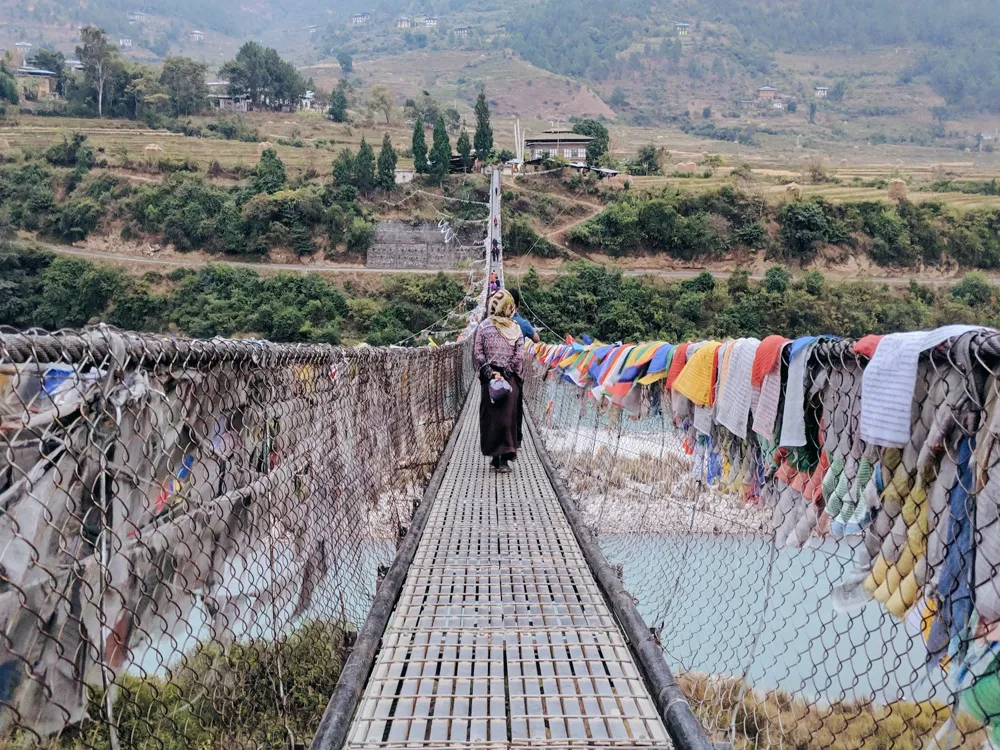
The second-longest suspension bridge in Bhutan, Punakha Suspension Bridge is perched over the Mo Chhu and Po Chhu (river) and is about 160-180 meters in length. It is one of the oldest suspension bridges in the world that connects Punakha Dzongkhag to the rest of the valley. Believed to be built by Thangtong Gyalpo, the bridge has undergone several years of renovation. It has an integral part in the architectural history of Bhutan as it was built to connect the villages of Samdingkha and Wangkha by the kings of Wangchuk. The bridge is beautifully draped with prayer flags and makes a perfect spot for bird watching and photography. Although it is built sturdily, it shakes when winds blow strongly, and that is when the thrill is at its zenith.
Read More
Rafting and Kayaking in Mo Chhu River
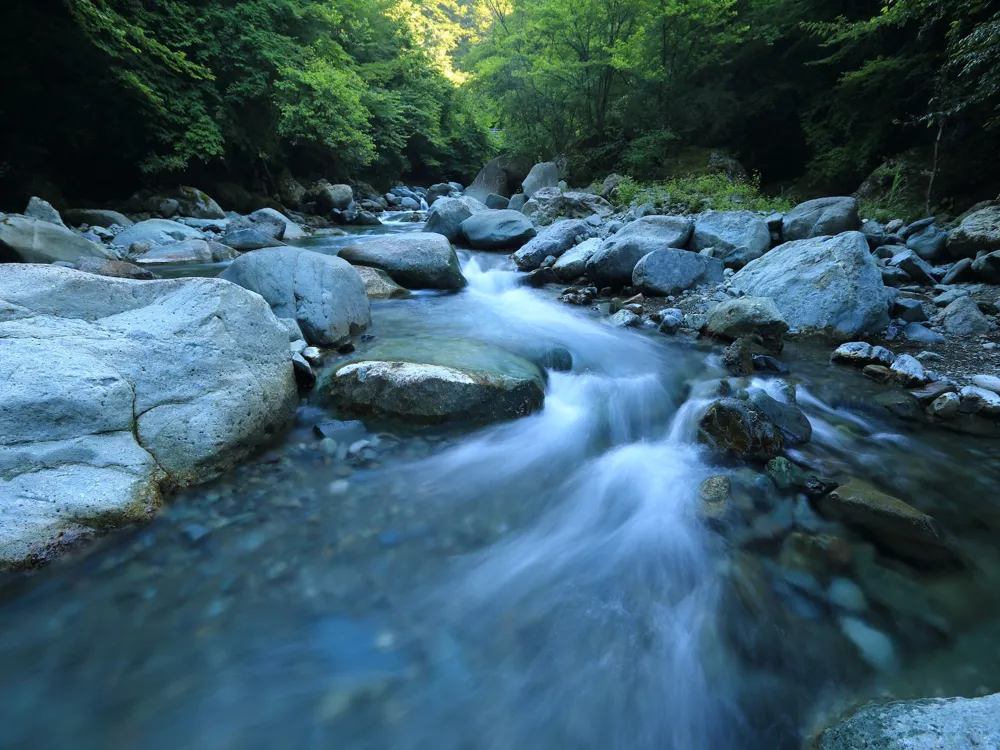
Starting from Gasa Dzongkhag district near Tibet and Bhutan border, the Mo Chhu(River) flows towards Punakha in the central region of Bhutan. It then joins the Po Chhu from the northeast of Bhutan. Although there are two rivers named Pho Chu (male) and Mo Chu (female) in Punakha, the latter one is widely preferred for the first-timers, kids and elderly people. Mo Chu River is considered to be calmer, gentle with few currents and rapids becoming the most used one to raft on compared to Pho Chu as it is said to be violent where only professionals and experienced rafters are allowed.
Rafting Stretch and Duration: 5.6 miles comprising of 10 rapids, 1.5 hours Price: The cost of river rafting during the peak season will be around BTN 3500 and during the off-season, it’s around Rs. 1500.Starts: The rafting starts at the bridge that leads to Khansum Yulley Namgyal Chorten Ends: Below Punakha Dzong.Difficulty Level: I-IIOperators: Druk Rafting services, Swan tours, Nature trailsBest Time: March, April, May, October and November is the best time to catch a glimpse of the rarest birds in the world. If you are fond of swimming, then you can even opt for the optional open float on the lowest part of the river, with gentle rapids, around the valley which will provide you with a 360-degree view of the beautiful nature around you. This is advisable for children above 5 years of age.The best part is, the rafters need not be professionals in order to go ahead with these water sports in Mo Chhu River. The only thing which they need to do is paddle through the river and the rapids, in some places.Note: The Tourism Council of Bhutan strictly restricts the entry of kids and senior citizens in this Pho Chu River especially during monsoon, the peak season for rafting.
Read More
Ritsha Village
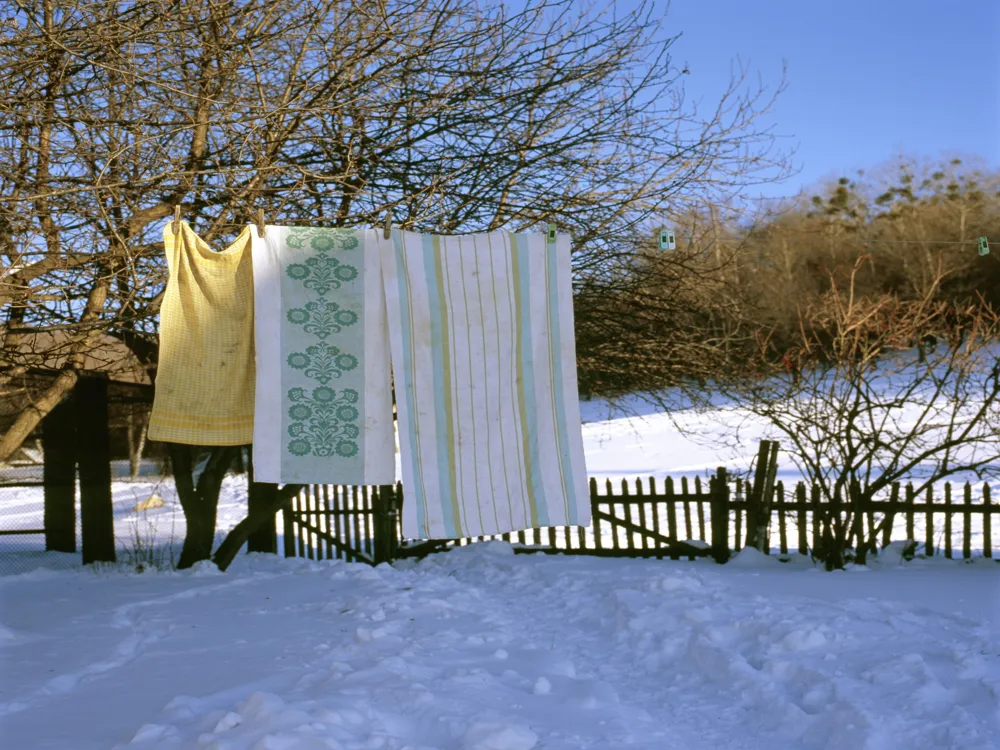
Popular for rice cultivation, the Ritsha village is where you would find both red and white rice grown in Bhutan. Located in Punakha on the banks of Mo Chu and Pho Chu river this village is famous for its majority production of rice. The word Ritsha means "at the base of the hill". The village is surrounded by the rivers, paddy fields and hills making it one of the must visit places in Punakha.
Sangchhen Dorji Lhuendrup Lhakhang
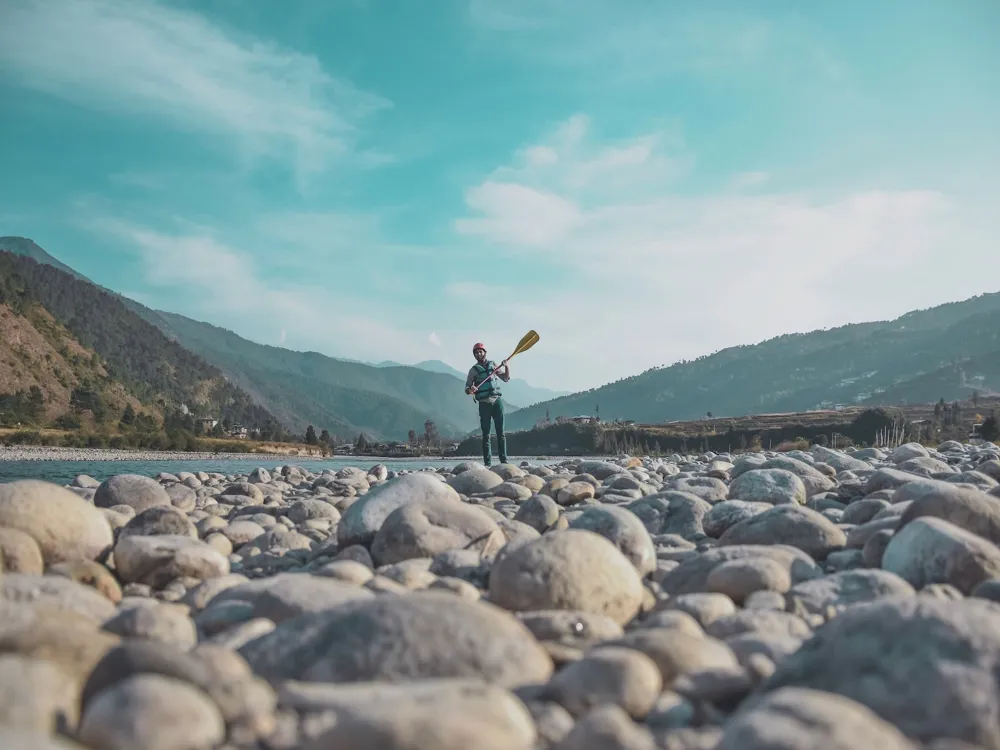
Overlooking Punakha, Wangduephodrang and Toebesa Valleys, Sangchhen Dorji Lhuendrup Nunnery is a temple as well as a nunnery perched over a ridge. Initially, the complex had 41 nuns with 70 rooms but now it houses over a hundred nuns. With a 14-foot bronze statue of Avalokiteshvara and few other bronze statues, the nunnery was consecrated by his holiness Je Khenpo. The Lhakhang (temple) is double storied with a chorten resembling Boudhanath stupa of Nepal with black carved marble blocks surrounding it. It's a great place to meditate and catch the mesmerising view of Punakha Valley.
Read More
Punakha Travel Packages
View All Travel Packages Punakha
Nearby Places Punakha
Browse Package Collections
Browse Hotel Collections



/mo-chhu-river-slider-1.webp)







